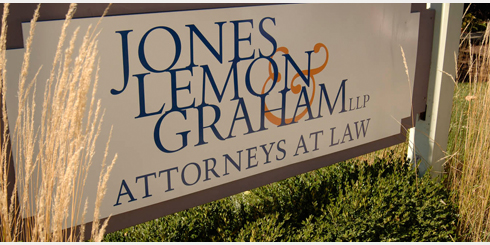Iowa federal court holds D&O policy’s “investment loss” exception to Loss definition didn’t apply to FDIC’s claim
by Christopher Graham and Joseph Kelly
Today’s post is our second about a case in Iowa, Progressive Casualty Ins. Co. v. FDIC, et al, Case No. C 12-4041-MWB (N.D. Iowa Jan. 23 2015). In our first post here, we addressed how the court found that the FDIC’s Claim as receiver fell outside of a D&O policy’s insured-versus-insured exclusion. Today’s post addresses an exception to the D&O policy’s Loss definition, for investment loss—which the court also concluded was inapplicable to the FDIC’s Claim. Hog heaven for the FDIC and bank directors and officers!
Here’s the scenario: Bank fails; FDIC is appointed receiver; it sues directors and officers for negligence and otherwise; they ask D&O insurer to pay for a defense; although the D&O policy has no regulatory exclusion, the insurer denies coverage based on insured-versus-insured exclusion; it also cites an investment loss carve-out in the policy’s Loss definition; it advances defense costs while reserving rights; coverage litigation follows.
What’s different about this failed bank case? (Allegations about investment decisions): Most failed bank cases have been about bad decisions relating to loans, many of which were real estate loans. But in this case, the FDIC’s Claim as the court described it was “based primarily on its allegations that the D&O Defendants caused Vantus Bank to use $65 million—120 percent of its core capital—to purchase fifteen high risk collateralized debt obligations backed by Trust Preferred Securities (CDO-TruPS) without due diligence and in disregard and ignorance of regulatory guidance about the risks of and limits on purchase of securities, resulting in losses of some $58 million.”
What else is different? (An investment loss carve-out): Given the FDIC’s focus on damages resulting from investing in Trust Preferred Securities, a central issue in the coverage litigation between the FDIC and directors and officers, on one hand, and the D&O insurer, on the other, was the effect of a part of the D&O policy’s Loss definition, providing that “Loss shall not include: . . . (6) the depreciation (or failure to appreciate) in value of any investment product, including securities, commodities, currencies, options or futures due to market fluctuation unrelated to any Wrongful Act.”
The D&O insurer’s main argument: The D&O insurer cited the investment loss carve-out as an additional ground—besides the insured-versus-insured exclusion—for why the D&O policy supposedly didn’t cover the FDIC’s Claim. As stated in the court’s decision, the D&O insurer argued “that the investment loss that FDIC-R seeks to recover is precisely the result of depreciation in the value of the securities and that depreciation was undeniably caused by market fluctuation, not by the alleged Wrongful Acts of the D&O Defendants.” Under the D&O insurer’s reading of the investment loss carve-out, “Loss does not include ‘depreciation . . . in value of any investment product,’ where depreciation is ‘due to market fluctuation,’ and that ‘market fluctuation’ is ‘unrelated to any Wrongful Act’”—meaning the Wrongful Act had no “causal effect on the ‘market fluctuation,’” as supposedly was the case in this instance.
The Decision: “As a matter of law, the ‘investment loss carve-out’ does not bar coverage for the D&O Defendants for the FDIC-R’s claims,” said the court. The court rejected the D&O insurer’s argument that the phrase “unrelated to any Wrongful Act” modifies the phrase “market fluctuation” and that “market fluctuation” “unrelated to any Wrongful Act’” means a Wrongful Act having no “causal effect” on the “market fluctuation.”
According to the court, the phrase “unrelated to any Wrongful Act” instead could be read—as FDIC and directors and officers argued—to modify the phrase “depreciation (or failure to appreciate) in value of any investment product”—rather than “market fluctuation”; so “depreciation in value” rather than “market fluctuation” would have to be “unrelated to” a Wrongful Act.
Given that there’s more than one reasonable way to read the investment loss carve-out, there’s an ambiguity and, in those circumstances, the reading favorable to the insureds controls.
As the court also explained:
Yet, even if “unrelated to any Wrongful Act” unambiguously modifies “market fluctuation,” the appropriate construction still requires coverage for the FDIC-R’s claims against the D&O Defendants, in light of the interpretation of “unrelated to” as unambiguously meaning “having no connection to.” The FDIC-R’s allegations, if proved, would establish some “connection” between the Wrongful Acts and the “market fluctuation” in the value of the securities at issue, even if the Wrongful Acts did not directly cause the “market fluctuation”—for example, by artificially manipulating the value of the securities for a time or actually causing the crash in the value of the securities. Again, it is the interrelationship or interplay of the alleged Wrongful Acts and the “market fluctuation” that ultimately caused the damage to the Bank, where the alleged Wrongful Acts were purchasing and holding the securities in question, or too many of those securities, which were subject to such “market fluctuation.”
Comments: If there’s more than one reasonable way to read policy wording, it’s not unusual for the policyholder’s reading to control. The “rule” that ambiguous policy wording gets construed against the insurer is an application of the broader rule applicable to contracts generally that ambiguous wording gets construed against the drafter. If the policy was a negotiated contract, perhaps a manuscript policy, with sophisticated parties on both sides, then the rule that wording gets construed against the insurer may not apply. In some instances, where there’s ambiguity, extrinsic evidence may be considered to attempt to resolve an ambiguity. All of these issues are matters of state law.
As this court pointed out, there was a “dearth” of case law on the investment loss carve-out. We couldn’t find any case about it, other than this one.
What has been more typical in bank D&O policies has been unpaid loan carve outs in loss definitions, which may apply, for example, to “any unrepaid, unrecoverable or outstanding loan, lease or extension of any credit to any Affiliated Person or Borrower.”
And there’s been a bit of litigation about those during the recent wave of failed bank litigation. See, for example, discussion here in Kevin La Croix’s D&O Diary.
Tags: Iowa, directors and officers liability insurance, D&O insurance, insured-versus-insured exclusion, IVI exclusion, derivative suit exception, insured versus insured exclusion, FDIC, FDIC-R, failed bank, directors, officers , investment loss carve out, Loss, community banks, regulatory exclusion, collusion, Company defined, “on behalf of”
Category: D&O Digest Comment »

